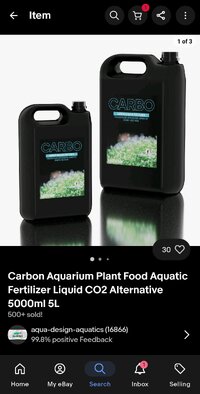Well again, the calculations cannot be verified just based on the atomic ratio of O and C in the GA compound.
It's highly likely that there is a series of chemical reactions that occur when a plant absorbs this compound. The atoms that form the CO2 may not even originate directly from the GA. We have no idea. Only Seachem and T. Barr have access to that information. You therefore cannot conclude that the GA equivalent CO2 production is 2ppm. It may be more than that , or it may be less. The computations are not valid until you know what the reactions are. How do you know for example that the compound isn't reacted upon by a Carbon carrying enzyme, and that the Carbon that results in the CO2 production does not originate from
that enzyme instead of coming from the Carbon in C5H8O2?
GA typically kills cells by cross linking the cell proteins. C5H8O2 is a versatile compound that can morph into many very different substances just by the geometric shapes that the atoms can arrange themselves in.
GA starts out looking something like this:
View attachment 29442
But here is another chemical that is completely different but has the chemical same formula C5H8O2.
This compound is Acetylacetone. It has exactly the same formula as GA, but the atoms are arranged differently.
This shape is non toxic and is the basic building block of other useful compounds.
View attachment 29443
There are at least a hundred different shapes of this chemical formula C5H8O2. Depending on which arsenal of enzymes the particular species of plant has at it's disposal, the GA can be transformed and then broken or integrated into another compound. Some plants and algae may not have these enzymes and so the GA attacks the cell walls causing rupture, or it may inhibit the activity of some proteins like RuBisCo, causing an internal CO2 shortfall.
Furthermore, if there is an enzymatic reaction, we don't know what conditions or compounds inhibit or reduce the efficiency of the reactions, so yield cannot be calculated outside of that context. Temperature, internal cell pH and other factors may have an effect.
The CO2 and other residues caused by the addition of GA may originate from some totally unexpected process or reaction. The possibilities are endless, and the Molar ratios need to be calculated based on those reactions. So it's a gross oversimplification to assume that:
C5H8O2 -> CO2 because the behavior of the chemistry may not be as linear as that.
Sorry, but the calculations are meaningless without further clarification of the process by which GA is metabolized or neutralized.
Cheers,




